
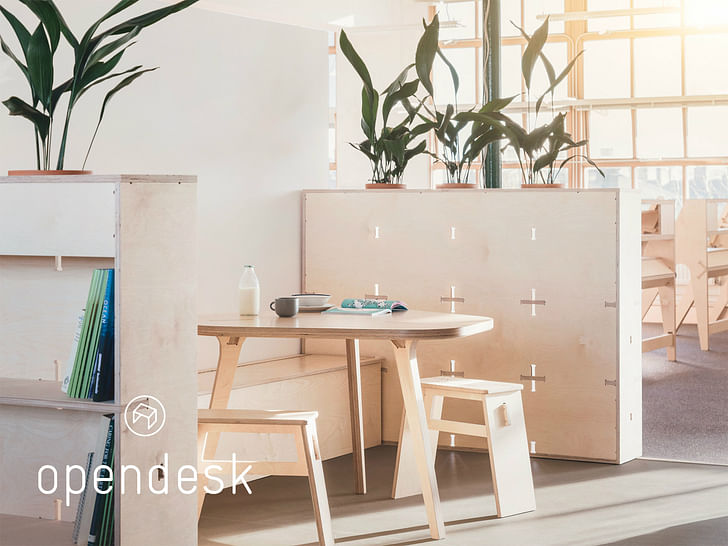
Before the Industrial Revolution, if you wanted a new piece of furniture, you’d go to your local carpenter. Today, you’re more likely to buy a chair that’s made of Brazilian wood, designed by a Swede, and manufactured in China than one with even a single locally-produced nail. Enter Opendesk, a furniture company with a global network and local manufacturing model, which might just spark a new revolution in the industry.
Actually, Opendesk is a “platform” as much as a company. Its easy-to-use website includes an archive of furniture designs, many of which can be freely downloaded, loaded into a CNC machine, and converted into a real, physical piece of furniture. But if you don’t have a CNC machine (or lumber, or technical know-how), no worries! With the click of a button, Opendesk will pair you with a local “maker” in your city who will realize the designs for you in a few days.
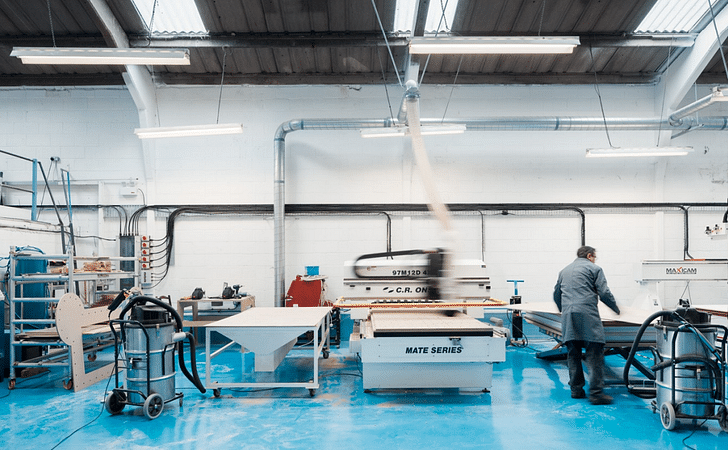
Started a few years ago by the London-based Nick Ierodiaconou and Joni Steiner, Opendesk is at the forefront of a growing movement trying to democratize design and manufacturing, replacing ecologically and socially destructive business practices with ones that benefit all parties – the designers, the manufacturers, the client, and, of course, the platform.Opendesk comprises a network of designers and makers that stretches across the planet
It’s also a family affair, with many of the first designs borne out of collaborations between Joni and his younger brother David – as well as a larger network of friends. For them, design doesn’t just dictate the manufacturing method, but the process also informs the design. “I think one aspect of this is aspiring towards greater efficiency, but it's also about imposing parameters on myself as part of the design process,” the younger Steiner told me by email.

Opendesk comprises a network of designers and makers that stretches across the planet. While about 70% of the current library of Opendesk furniture was designed in-house, the company hopes to change – even reverse – that figure in the near-future. Before reaching out to local designers, they wanted to make sure they had already established connections with makers. Now that they have some 500 makers around the world, they’re expanding the network of designers as well, while seeking to maintain a highly-curated selection of products.With all the new technologies we have, it makes sense to work and collaborate with anyone, no matter the distance
One of the first members of the designer network of Opendesk, Denis Fuzii is an architect and the founder of Studio dLux, a multi-disciplinary design and architecture office based in São Paulo. Several years ago, a client had approached him with a project involving an assembled chair, the first time he worked with digital fabrication and CNC machines. Opendesk later stumbled on his work and approached him about working with the emerging company. Fuzii designed some of Open Desk’s first pieces and has worked with them since.

“With all the new technologies we have, it makes sense to work and collaborate with anyone, no matter the distance,” Fuzii tells me. “It's just a matter of trust and the desire to make things come true… The future should be open-making, we have to empower the social and the local maker in order to make things more easily to process.”
I got in touch with Steiner – officially the creative director and cofounder even if, according to Steiner, “neither of these titles are really used apart from with the outside world” – to hear more about Opendesk, its history and innovative business model.

To begin, I was wondering if you could give a bit of biographical background. What was your training as a designer? Do you still work as an architect?
I studied at the University of Bath for my BA and then the Royal College of Art, London, for my MA. The formative years in Bath were really important – I met and studied with a group of like-minded folks and a group of us went on to form an experimental architecture and design studio called 00. One of this group is my co-founder at Opendesk, Nick Ierodiaconou. We’ve known and worked together since those days back in Bath.
Post-university, pre-00 the group all went off to work for other practices to gain experience. I worked for David Adjaye when he was just starting out (I was employee #8 I think) and learned a lot. I worked on many of his first built projects and competition wins – including the Nobel Peace Centre in Oslo and the Ideas Stores in London. It was an exciting time.
00 was founded as a “collaborative studio of architects, strategic designers, programmers, social scientists, economists and urban designers practicing design beyond its traditional borders.” The initial group included not just architects but a sociologist and urban geographer – and more recently a web coder and economist have joined.Opendesk is a furniture company with a new operating model
Opendesk has grown out of 00, which we’ve always considered as an “experimental incubator for ideas”. Like WikiHouse – which is a sister project – Opendesk’s evolution from a tiny commission to digital startup is true to the way we’ve always wanted 00 to operate: a platform for ideas and projects supported by a group of like-minded individuals.
Opendesk is a furniture company with a new operating model, and in this it shares something with everything Project00 is doing – rethinking operating systems, and for any given project, using design challenges as opportunities to try and maximise social impact. Along with Nick, I’m still a ‘member’ of the 00 group – but we both spend 100% of our time focussed on Opendesk now, it’s more than a full-time job!
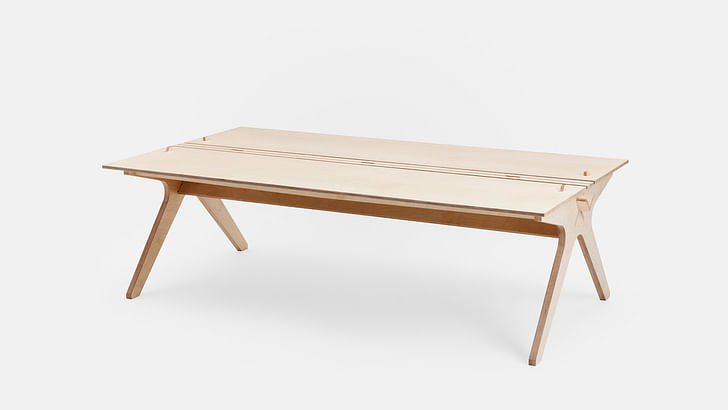
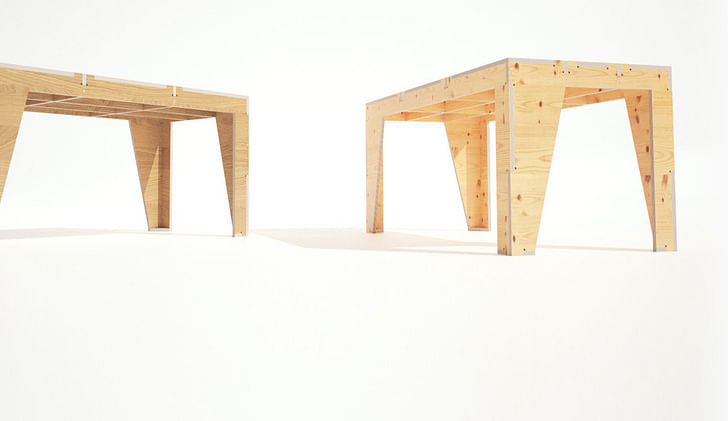
What relationship do you perceive between designing furniture and architecture?
I’d say designing at both scales comes with the need for sensitivity to a range of competing factors. From considering the efficiency of materials and their provenance, through finding and creating experiential delight for occupants and users to the need to consider budgets and life-cycle costs very responsibly. Also of course listening, learning and iterating alongside having patience, care and wit – all needed!
I’m really not of the opinion that an architect should design both – especially not for their own building. And I’m saying this even though I’ve ended up with furniture I’ve had a hand in designing within a building I’ve also had a hand in designing! They weren’t designed specifically for each other – I think buildings should be containers for the life and activity within them, and furniture is essentially infrastructure to support the same – but both should afford freedom in how they foster and host this… rather than being deterministic – hence should also be independent from each other.
I don’t really think of myself as a furniture designer (I’m not by training at all) nor an architect anymore – I’m a retired architect if anything ;)
The built environment we have is here to stay; we need to work with itPerhaps one of the interesting things that came out of our earlier work at 00 was a focus on workplaces and the "future of work" alongside occupation – the performative aspects of spaces over more aesthetic or compositional concerns. We designed a group of co-working spaces, called Impact Hubs. In London there are now six. These spaces are supportive, community-led co-working spaces for startups and smaller companies who share a desire to make a positive social impact in the world through social enterprise. Research into the use of office environments uncovered some interesting and perhaps surprising truths (for example, at any given moment in an office environment in the world, 40% of employees on average are “out of office” – at meetings, holidays, working from home etc.) that led to new typologies and business models for the Impact Hubs.
At the same time the economic crash really brought “value” into sharp focus. In any given project, what is the perceived value – by the designers, clients, wider society (remember them?!). We saw that:
We did wonder how this thinking could be taken into more and more of our projects, and this led to explore programming space and using furniture as means to support this. In many ways our thinking about the future of work and the Impact Hub environments led to our first ideas for Opendesk furniture – collaborative, sociable and engaging furniture that could be easily moved to change the use of spaces and reconfigured / adapted over time as needs and technologies changed.
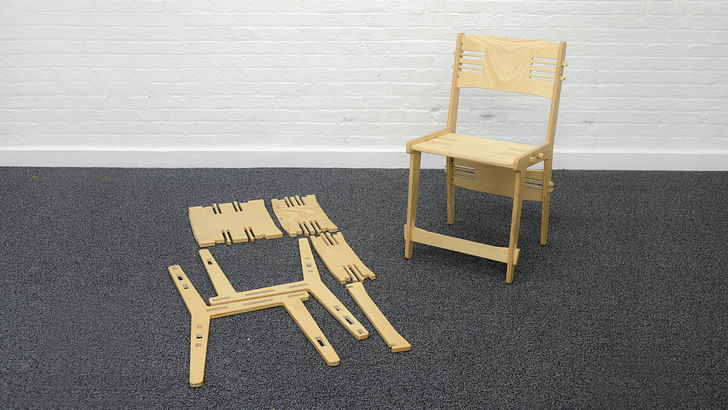
What was the initial impetus to start Opendesk?
We got commissioned to design an office for a software company in London who also had offices in NYC. So our first Opendesk was an experiment, somewhat forced upon a pair of architects with little experience in digital fabrication. A small project for a “silicone roundabout” software startup brought the challenge of designing a piece of furniture that was not only affordable and quick to make, but could be adjusted by the client (versioning on Github, for coders out there) whilst also being “shareable”.Why would we ship heavy pieces of timber across the Atlantic when we could just find a workshop in Brooklyn and make them locally?
Our enlightened and very trusting client, Mint Digital, opened our eyes to the tech world, and we soon asked ourselves why a furniture company couldn’t act more like a technology company. Then, when they wanted the same desks in their New York office, we wondered why would we ship heavy pieces of timber across the Atlantic when we could just find a workshop in Brooklyn and make them locally? We fell in love with John Maynard Keynes and his assertion, “It’s easier to ship recipes than cakes or biscuits.”
That first design grew from a humble architectural commission, but it got us thinking about a bigger mission: one of open, ethical supply chains, the implications of sharing of intellectual property, the possibilities of distributed manufacturing. Opendesk doesn’t “own” any of the makers’ workshops I mentioned above – we don't own any means of production at all. We’ve built a network of over 500 existing “craft” fabrication workshops globally and have managed to grow to places we would never have been able to reach by operating under an open business model and by using the latent capacity in existing workshops around the world.
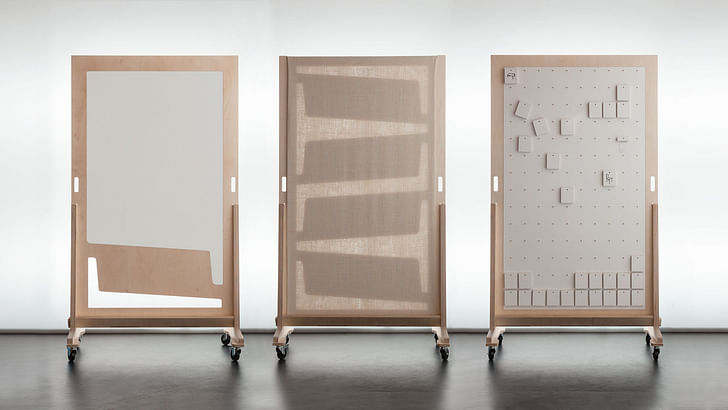

Can you tell me a bit about WikiArchitecture and its relationship to the Opendesk project?
WikiHouse started out as a sister project within the Project00 studio. The first open source desk for Mint Digital got us thinking about digital fabrication and bigger applications than furniture. At the same time we got commissioned to design an exhibition questioning the relevance of open source in design – and rather than exhibit ideas on a gallery wall we decided to use the limited budget to build an open source architectural project. We chose a house because it’s so universal and being able to CNC “print” your own seemed like a very disruptive and hence appealing idea. We had no idea it would live on after the exhibition, but it’s now a foundation with teams around the world sharing knowledge and building on each other’s learning.
Nick and I switched our energies back to open source furniture sometime after this, as we began looking into the possibilities of distributed manufacturing and realising there was a huge capacity and appetite out there to rethink how things are made. Nick, together with James, who’s now our CTO, built a directory of digital fabricators called FabHub.io and we saw many many people sign up and create a profile. Alongside this – working side by side in the Impact Hub Westminster on early prototype Opendesk [pieces] – I kept getting asked again and again by other startups and visitors to the space and events if they could have the same furniture for their new office.
At some point we sat around together and decided to build a website to host the design files for the original Opendesk, linked to the FabHub.io directory. We could then let people know that here they could find both the desk (as a piece of software!) and a maker local to them (they could search for the nearest maker with a CNC machine by entering their postcode). Opendesk was born!
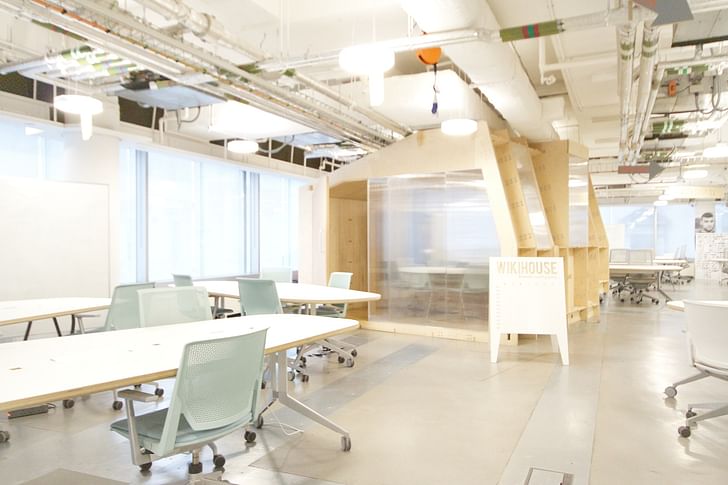
How has the company evolved since then?
Soon after [we founded], TechCrunch wrote about us, our website collapsed (and was heroically rebuilt by James) and the rest is history! Well – almost. We then managed to secure an Innovate UK grant for some of the work we were developing – on the proviso that we shared it openly, something we were doing anyway! – and we then needed to match-fund this so we turned to the crowd. We managed to hit our CrowdCube funding target of £250K in under 24 hours, and with this backing we were able to build the team we have today.
We’ve used the last year to build internal systems and become hugely more efficient at customising and issuing production-ready design information whilst also putting in place checks to ensure consistency and quality and make it easier to bring new designers and makers on board. We’re about to publish designer and maker guides online to facilitate this.
Our core mission is to grow Opendesk as a platformWe are still a “startup” company, and so we are working hard to grow our network and make the company profitable – this takes time and lots of late nights! We’re launching a second crowdfunding campaign in early April 2016 to help us take Opendesk to scale around the world – to enable us to grow our “Open Making” model to provide a significant source of income to as many designers and makers as we can. With crowd-funded support, our target is to reach 1,000 makers by the end of 2016!
Our core mission is to grow Opendesk as a platform and to do that we’ve needed to learn lot in a short time whilst building lots of internal tools to make our processes more efficient and responsive. We’ve worked on projects with fantastic organisations such as Greenpeace – we recently fitted out their London HQ – and through these have been able to fund the development of our core “platform” – the technology that links us to the many makers around the world and provides them with with right digital file on demand (and specific within 0.1mm to the material being used!).
We’ve grown from the founders to a team of 20, scaling our design library from the first Opendesk to around 60 products and our maker network from a single guy called Ian Jinks in London to over 450 and counting.

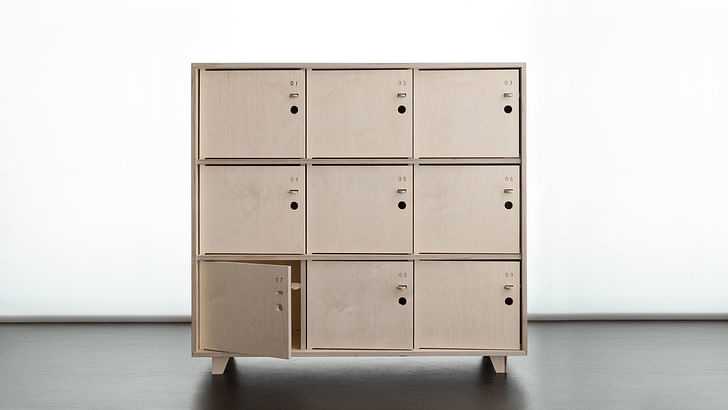
What’s Opendesk’s business model?
We’re there to connect customers with great designs and help them get made locally. We want everyone to feel like this works for them – in their interests – whilst also respecting everyone else’s interests. We’re open about that, including to customers. We show them exactly how the price breaks down and so who gets what: where the money goes. How this works in practice is that we explain this model to designers and makers, and ask that they are committed to the same outcomes – 99.9% are!
The Opendesk platform hosts designs that can be made in any carpenter’s workshop or fablab in the world with a CNC machine. Our idea is quite simply that when you want a piece of Opendesk furniture, you find a local workshop via opendesk.cc and ask for that to be made local to you.
We’re there to connect customers with great designs and help them get made locally.Opendesk has a relationship with all of the “makers” in the network – now over 450 – and when anyone on the network makes a product we ask them to factor everyone into the price. That means the price a customer gets includes the cost of the materials, the CNC-cutting, the finishing, a percentage for the designer and also for the Opendesk platform.
Opendesk is therefore adding a “platform” markup to all transactions, which covers the prototyping, marketing and CAD engineering work done by the Opendesk team to prepare the designs to be optimally ready for the CNC machine.
We also provide value-added services to companies using Opendesk furniture to fit out their workspaces. These include charging for design customisations, space planning and project support. In addition, we have re-seller agreements with Haworth and Vitra, whereby we are able to offer their chairs and other complementary products alongside our desks, tables and storage in larger projects.
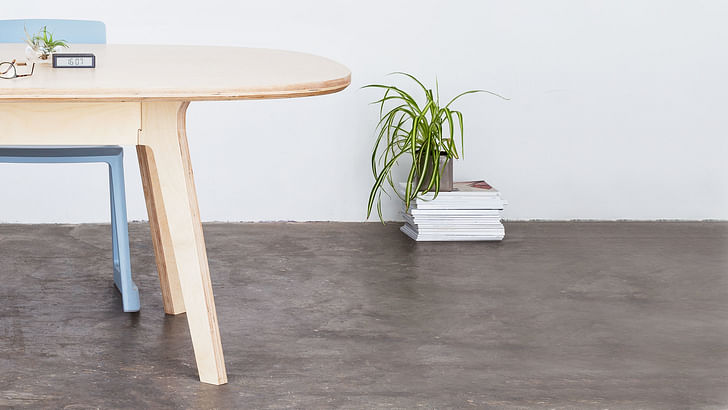
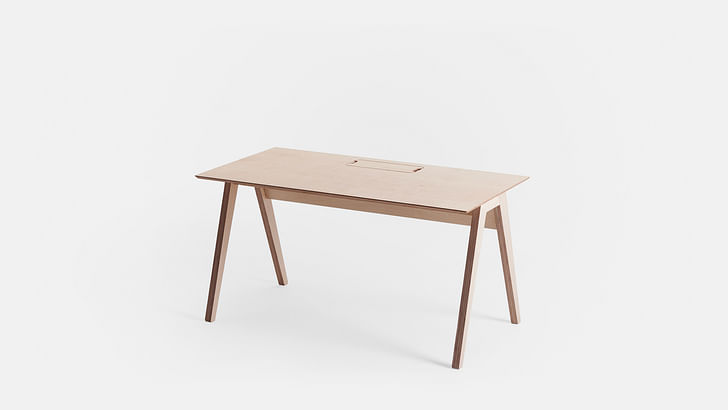
At a glance, the emphasis on open source design and local production speaks to a certain contemporary "maker ethos," if that makes sense. Do you feel that Opendesk belongs to a particular cultural moment?
I think we reached a cultural moment, but I don’t think it was an isolated moment. Rather it’s something we arrived at through an erosion of values leading up to 2008 – and a realisation that since then that there can be no more “business as usual”. We saw the impact this had on design and architecture where we’re finally coming to the end of the Starchitect, the absurd idea there’s a singular author of anything. The “fountainhead” is finally dead.
The future of design and architecture will be about using parametric models, data-driven processes and digital tools – but it’s not about claiming this future as anything singular, the idea [that] this all belongs to something like “Parametricism”. That’s just an elitist framing of a stylistic position by the 0.1% for the 0.1% and really shows how out of touch the old guard have fallen.
Design is no longer about a monologueDesign is no longer about a monologue, that it’s contingent on a dialogue with external systems – and people! – is vital. Architecture and design Depends (thanks Jeremy Till) and it feels refreshing to be a part of a cultural moment that’s finally recognising that. As online sharing platforms, open source models and digital manufacturing technologies develop to facilitate on-demand, digital and hyper-local parametric manufacturing, we see this moment as an opportunity to rethink how goods and services are made and distributed on a global scale.
We see this moment as fitting into a bigger movement that’s already happening. At the start of the 21st century we’re in a period of rapid change. Everybody has now heard of the Maker Movement but not everyone sees just how disruptive this will be. Open models excite us because they are inclusive and speak to the many. We’re open-first, open by default, but not dogmatic in that position. We believe that making things open is beneficial but that this is not binary, and choice is important. In being agonistic to, say, the licensing of the designs on the Opendesk platform – in the same way as GitHub acts for software – we bring everyone to the table and say “your point of view is valuable, we want to share it and learn from it.” We think this dialogue is really important.
The more important thing is to be a social platform, an infrastructure to support Open Making.


How do you come to collaborate with other designers? And what’s that relationship like?
As a platform, Opendesk primarily exists for the community of designers and makers we work with. Our idea is to rethink how goods are made for the benefit of everyone – the maker, the customer… and the designer. It certainly feels like the designers we currently work with enjoy the relationship that the platform is bringing. To us they’re partners, advocates and friends.
Traditional design companies dictate the terms under which the designers they employ are going to work. The % "commission" fee is typically 2-3% and they ask for exclusive use of the designs produced as part of the contractual agreement. In comparison, Opendesk allows designers to set their own % design fee – which is averaging at 8% of the “making” cost – and we don't ask for exclusivity (designers are free to make and sell their designs elsewhere also). Whilst we are “default-open” we let designers choose the IP license that suits them and their design best. Most choose one of the Creative Commons licenses, but they’re not restricted to them.Our idea is to rethink how goods are made for the benefit of everyone – the maker, the customer… and the designer
We imagined working to bring a large number of new designs and designers and regularly bringing them onto the Opendesk platform. Our first experiment in finding new designs was to create a “Pinterest” style studio page at opendesk.cc where designers and the general public can “pin” designs they’d like to see and visitors to the site can vote on these, with the intention being to bring, with the consent of the designer, the most popular designs onto the Opendesk platform.
This approach has brought a great many designs to our attention, but we’ve realised that many of these are not products that we can necessarily easily make or market to our core audience, which is creative companies looking for great furniture for their workplaces. We’re now planning to shift our focus towards curated design challenges, where we ask the design community to address a need that we’ve identified, often via feedback from real customers, for workspace products. We’ve just launching a design challenge via one of our makers, Miocugino in Milan, and we’ll be launching another in time for London’s Clerkenwell Design Week in May.
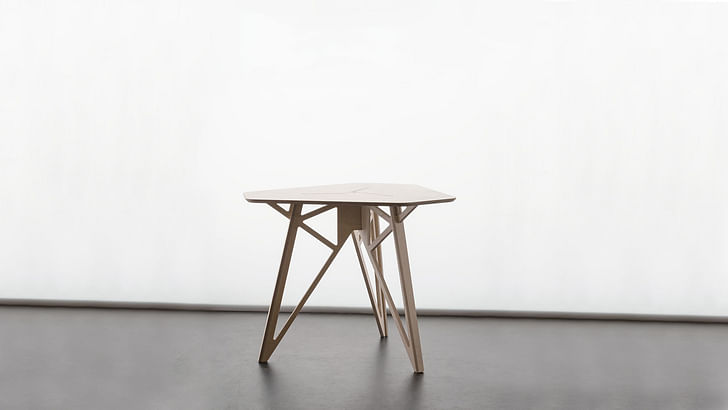
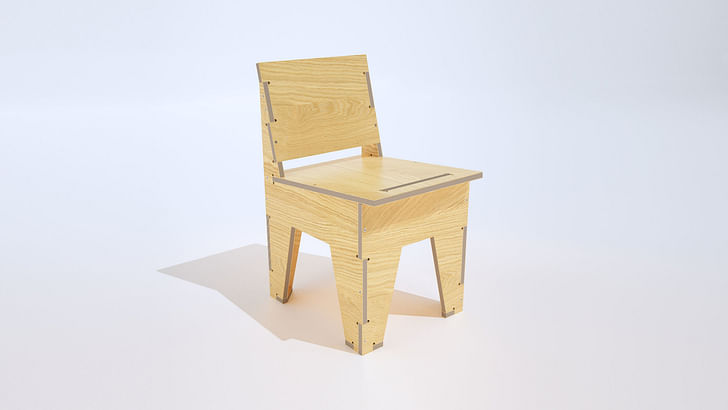
What are your plans for the future of Opendesk?
We’re trying to build a platform that recognises a shift is happening – that there is no more business as usual – whether that’s in hospitality, logistics or retail. Social marketplaces, like Airbnb, Nimber and Etsy demonstrate a strong trend towards platforms of collaborative consumption and in some respects Opendesk poses the question “is collaborative production also possible?”
We think that building the infrastructure to help facilitate collaborative production – socially-conscious and democratised – will enable a new and transparent understanding of how everyday products are made. We want to bring this “Open Making” model to as many countries and cities as possible, to show this is not only viable but vital. We’re also hoping the Open Making model can inspire and kickstart 1,000 more Opendesk-like platforms.
We think this is an exciting time for designers and architects to employ the skills at our disposal, to leverage design and technology to ask wider questions about how we make. In so doing we have an opportunity to bring about a supply chain that’s more human, social and local.
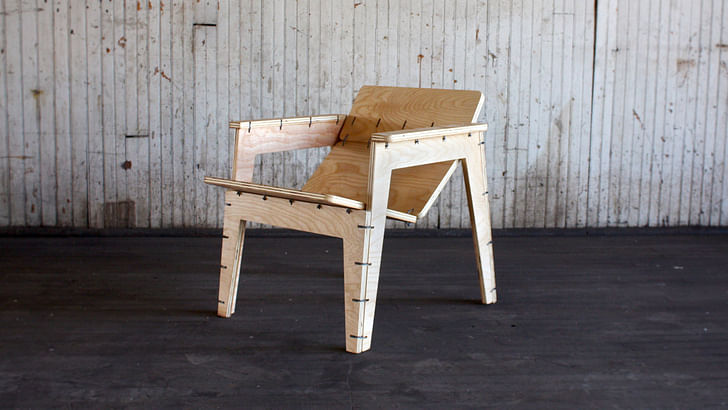
Interested in other disruptive endeavors? Check out the other pieces included in Archinect's special March 2016 theme, Money.
Care more about good design than good business? Then check out some other talented designers from the February 2016 theme, Furniture.
Writer and fake architect, among other feints. Principal at Adjustments Agency. Co-founder of Encyclopedia Inc. Get in touch: nicholas@archinect.com
6 Comments
great shear release/corner crack detail.
Mr. Steiner describes the products as "local," but are they really? The plywood is still imported, and the CNC routers are still built and sold as heavy machinery always has been.The "maker" in this equation is simply a machine operator (probably at a nice shop owned by people doing good work, nothing against those folks.)
There are furniture makers all over the place using reclaimed lumber and doing lots of other exciting things - actual craft, building furniture that will last generations. Why choose fairly disposable plywood furniture instead? Pretty expensive, too, for what it is.
Genuine questions: I'm on the fence - I kinda like the idea, but I'm far from sold on the model it proposes for design and fabrication. Is it more than just Uber for furniture?
anon..
but how much of a difference is there between using reclaimed lumber and using plywood? how many times can reclaimed be reused? what kind of labor/shipping goes into make reclaimed lumber actually re-usable? The machines and plywood being shipped is being shipped anyway..the machine transport is only the one time. That machine then can be used 1000s and 1000s of times to make this flat pack furniture (reducing shipping costs by making them more locally to the purchaser while also reducing costs by making the piece cheaper/flatter to ship.) Also what's nice is the idea is free to ship... vs. if you had to ship from NYC to Tokyo... the savings in energy and money is significant. The plywood you're looking at above is not cheap/IKEA plywood... that stuff costs about $98 for a 4'x8' sheet. It is designed to last. Now the aesthetic is a question of personal taste. I think what is smart about the idea is the similar idea of something like the Eames fiberglass chair...making potential high end design available for the masses.
Lars,
I understand that the Baltic Birch ply is nice stuff, and FSC certified. That's great, really. But reclaimed has it beat by a mile, from a sustainability standpoint.
I include salvaged timber in the category of reclaimed wood, stuff that really isn't suited to industrial processes because a lot of it is reaction wood, or that has defects that need to be worked around. That's something a craftsperson can do, but a designer assuming consistent material properties, and using industrial machinery, is ill equipped to handle.
I guess that my worry comes down to the same thing I always find problematic when architects make plans for a sustainable future: the assumption is always that the industrial processes (of which design is a part) that have produced the mess we're in can be tweaked to save the day, when maybe a return to small scale craft enterprises would be a better way forward.
Based in Mexico City, with years of experience in overseas furniture fabrication we were looking into developing a local manufacturing operation were we could develop people, ideas and technology. But competing in such a high market entry business was impossible.
We stumbled with Opendesk and after a brief exchange of ideas our project and workshop were on its way. Three years later I am glad to say we are well into the making…
Opendesk is a combination of great people with a great idea surrounded by a committed community, a seed for local development with a feedback loop that shares and empowers creativity and hands on attitude.
CNC Routers are wonderful, but they are far away from magical. They, like any other machine requires skill and knowledge to operate. A beautiful Opendesk design is brought to life by incorporating locally available materials and dedicated craftsmanship to meet market taste and demand.
A beautiful Opendesk design is brought to life by incorporating locally available materials and dedicated craftsmanship to meet market taste and demand.
locally available materials But doesn't the Opendesk model, in fact, rely on standardized materials? Nike shoes and Coca-cola are "locally available."
dedicated craftsmanship I think that designers are in love with the word craft: it implies quality and care. But programming a CNC router is not craft; it is fabrication. I have no doubt that the local fabricators do good work, but I would much prefer a model in which they were either making their own products, or in collaboration with local designers, instead of working as cogs in the Uberization of product design.
Block this user
Are you sure you want to block this user and hide all related comments throughout the site?
Archinect
This is your first comment on Archinect. Your comment will be visible once approved.